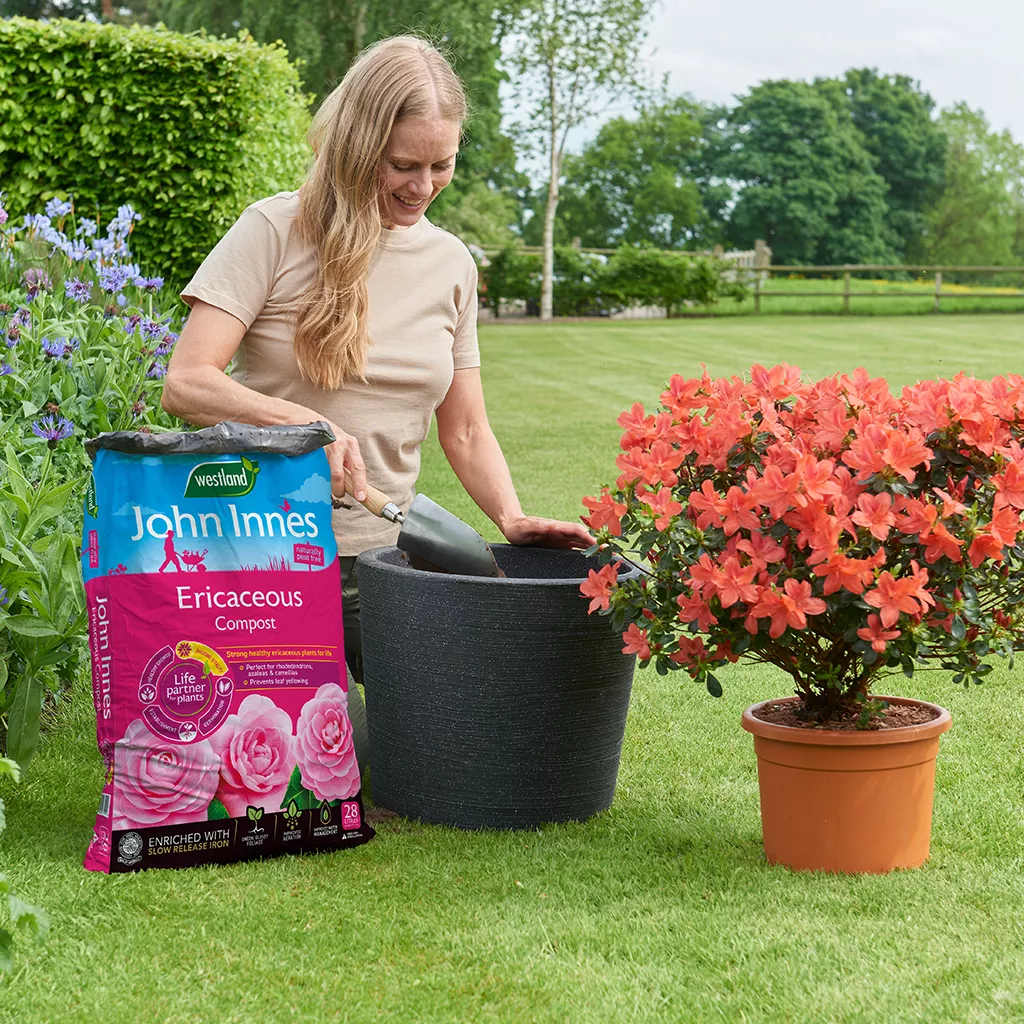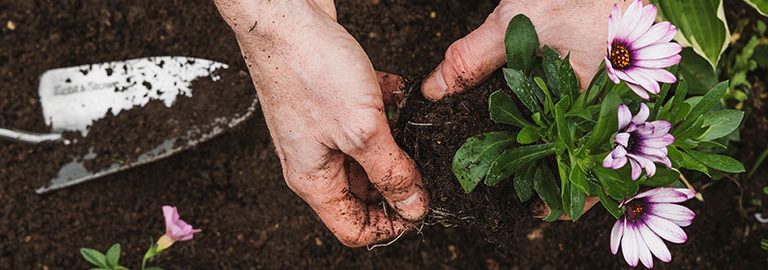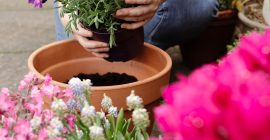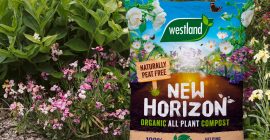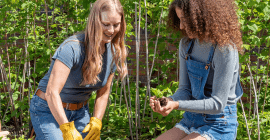Using Peat Free Compost
For over 20 years, Westland have been leading the way in developing peat free technologies for the home gardener. We have led the way in research and development over the last decade to ensure the transition to peat free and low peat compost is easy, safe and hassle free for all gardeners.
Westland composts are blended to exacting standards to ensure best results every time you grow regardless whether it is peat free or low peat. We believe whatever compost you buy from Westland it is of the highest quality and consistency, for the best growing results.
The Look and Feel of Peat Free Compost
Peat free compost will look, feel and even smell different to peat and you are likely to notice a difference in how your plants respond to peat free compost too. There are many ways you can adapt the way you grow to better suit peat free composts.
Key Differences You Might See:
- A lighter, more open structure
- Interlocking fibres in addition to small particles, so the material is less easy to crumble and free flowing
- Lighter in colour
- A different smell
- Westland commits to using 0% green waste in our mixes, however, many manufacturers use green waste, so you may notice stones, twigs, weeds, metal as well as plastic in your compost
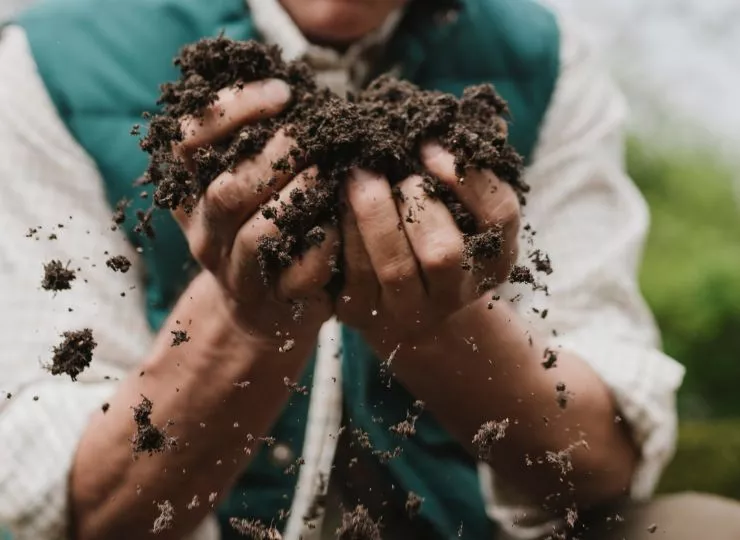
Water Management
Peat free products differ from peat-based ones when it comes to water management.
- They have a more open, porous structure, meaning they may benefit from more frequent watering, but not necessarily a larger volume of water
- The surface of the compost might dry out while deeper down it is still perfectly moist
- Peat tends to be difficult to rewet once dried out. You will notice your peat free mixes are much easier to rewet once they’ve dried.
How to Treat your Peat Free Compost Differently:
- Use Westland Boost Liquid Plant Food when you water your plants. Boost’s Plantsense technology means the distribution of water is even and held in the compost
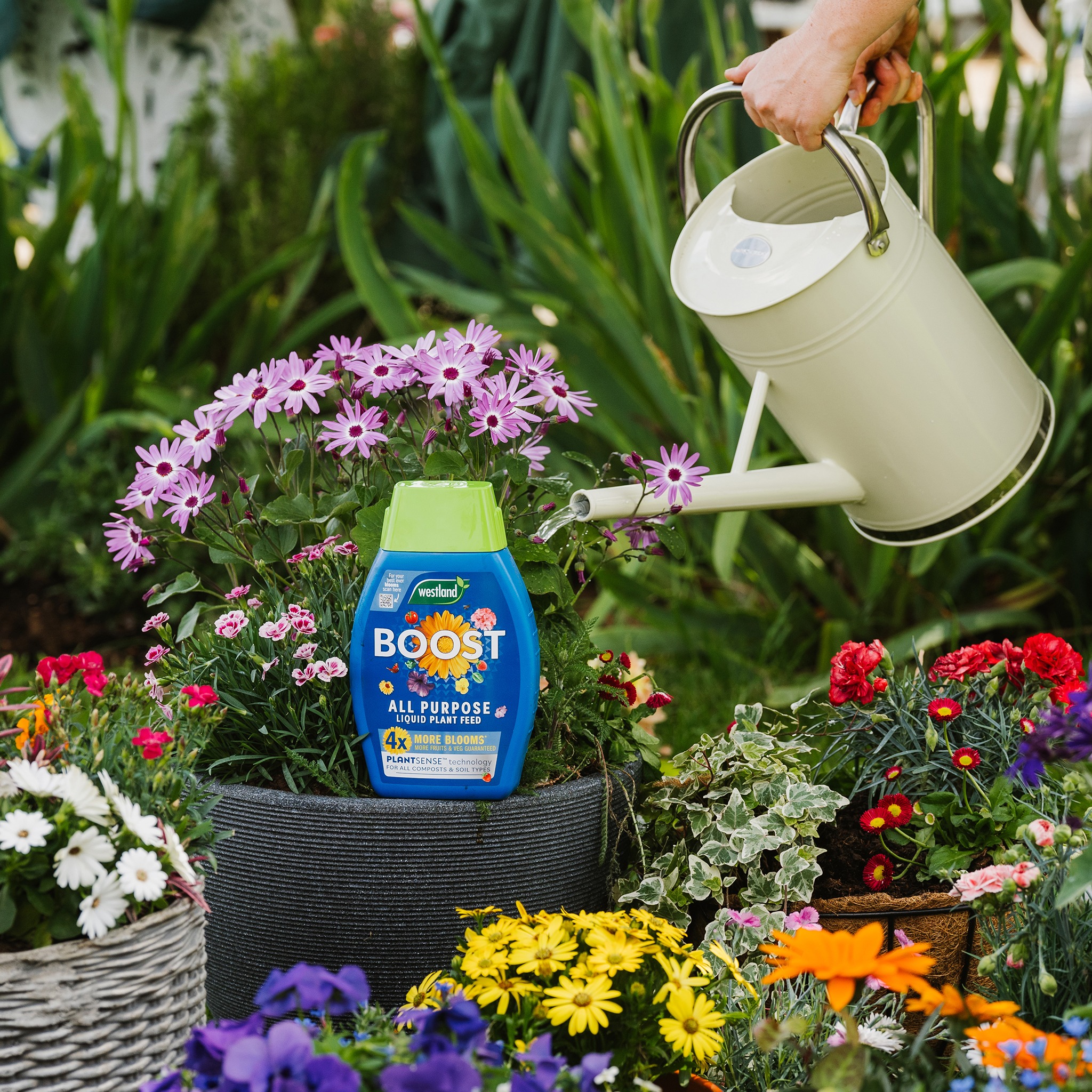
- To avoid over-watering, check below the dry surface layer before you water your pots. You can do this by:
- Pushing your finger into the compost to feel the moisture level
- Picking up the pot to feel the weight
- Using a soil moisture meter such as Gardman Digital Moisture Meter
- Check your pots more frequently in warm, dry weather
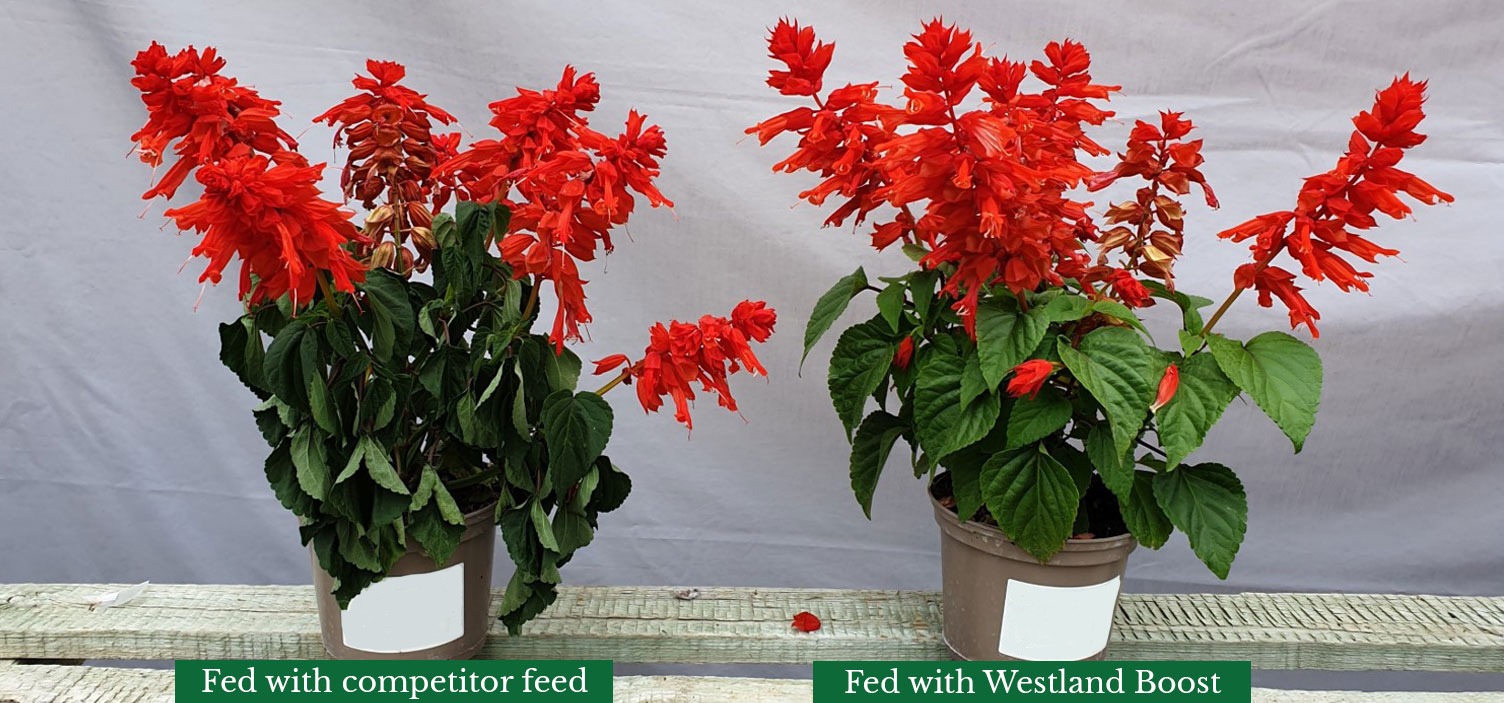
The above image shows Salvia plants grown in peat free compost. One has been fed with Boost with Plantsense technology, and the other fed with a leading competitor product. Note the wilting in the plant on the left, caused by lack of water. Boost liquid feed effectively holds more water evenly in the compost.
Nutrition
Peat is biologically inactive, whereas peat free products are biologically active, making for a more natural growing environment for your plants. This, therefore, improves nutrient exchange between the plant and the compost and allows for natural disease suppression. However, soil microbes can “lock up” some essential plant nutrients, especially when in the presence of woody material found in peat free mixes. Westland raw materials are extensively processed to avoid nutrient lock-up. You might find your plants are susceptible to nutrient imbalances and deficiencies.
How to Treat your Peat Free Compost Differently:
- Be aware of common signs of nutrient deficiency (leaf yellowing, leaf necrosis, stunted growth), and check your plants frequently
- Feed frequently with Westland Boost, which is carefully formulated to support plant growth in peat free compost
Many growing media manufacturers use waste products such as green waste, which can have very poorly balanced nutrient levels, and a high pH which limits nutrient availability.
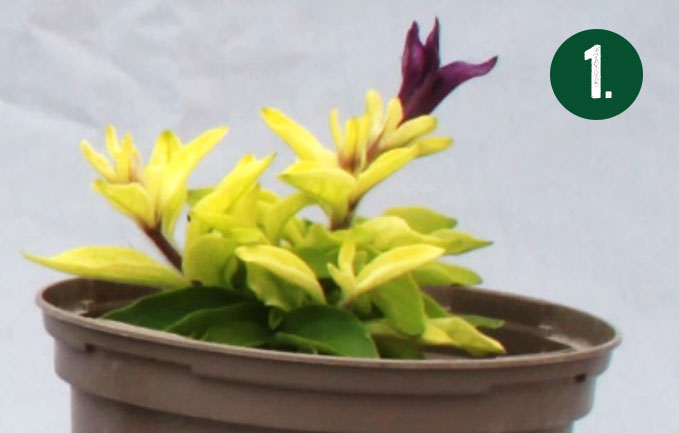
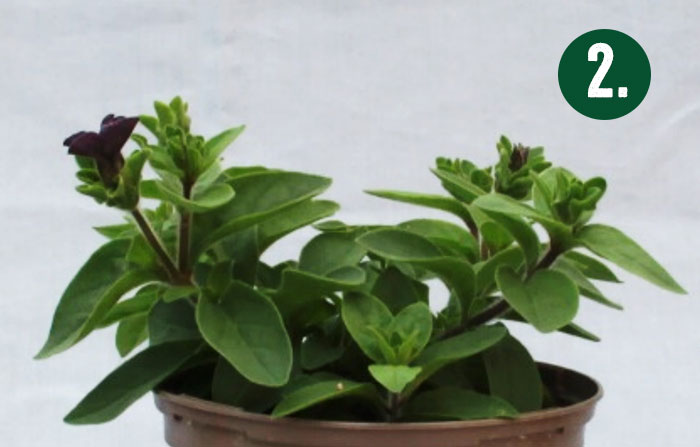
Image 1 – A petunia plant grown in a peat free formulation with a very high pH level – makes it hard for the plant to get its required nutrients. Liquid feeding (eg. Boost Liquid Feed) will help to solve the problem.
Image 2 – A petunia plant grown in a Westland peat free multipurpose compost – pH and nutrient has been balanced to give similar performance to peat-based mixes.
Prepare before you Pot:
- Manufactured wood fibres such as West+ have a light open structure, giving plants access to plenty of air for respiration. However, they can become compressed. Fluff up the compost with your hands before you plant up, returning the compost to its original volume.
- Water well until water starts to leach out of the bottom of the container. Wetting the compost either before you pot up or during the first water will kick start the plant food in the compost, making nutrients readily available for your plants more quickly. It will also make the compost easier to rewet in the future.
Specialist Peat Free Compost
Peat has some characteristics, such as excellent nutrient buffering that make it great for use all around the garden. With the move to peat free, it’s important to consider using specialist products rather than multi-purpose for some jobs:
Sowing seeds and rooting cuttings
- Fine texture means seeds and young roots have better contact with the substrate, and small seeds are less likely to wash away
- Nutrient content is reduced so sensitive seeds and young plants aren’t “burnt” by excessive nutrients
- Westland John Innes Seed Sowing Compost is an especially good choice. The addition of loam makes for a finer texture and better nutrient buffering
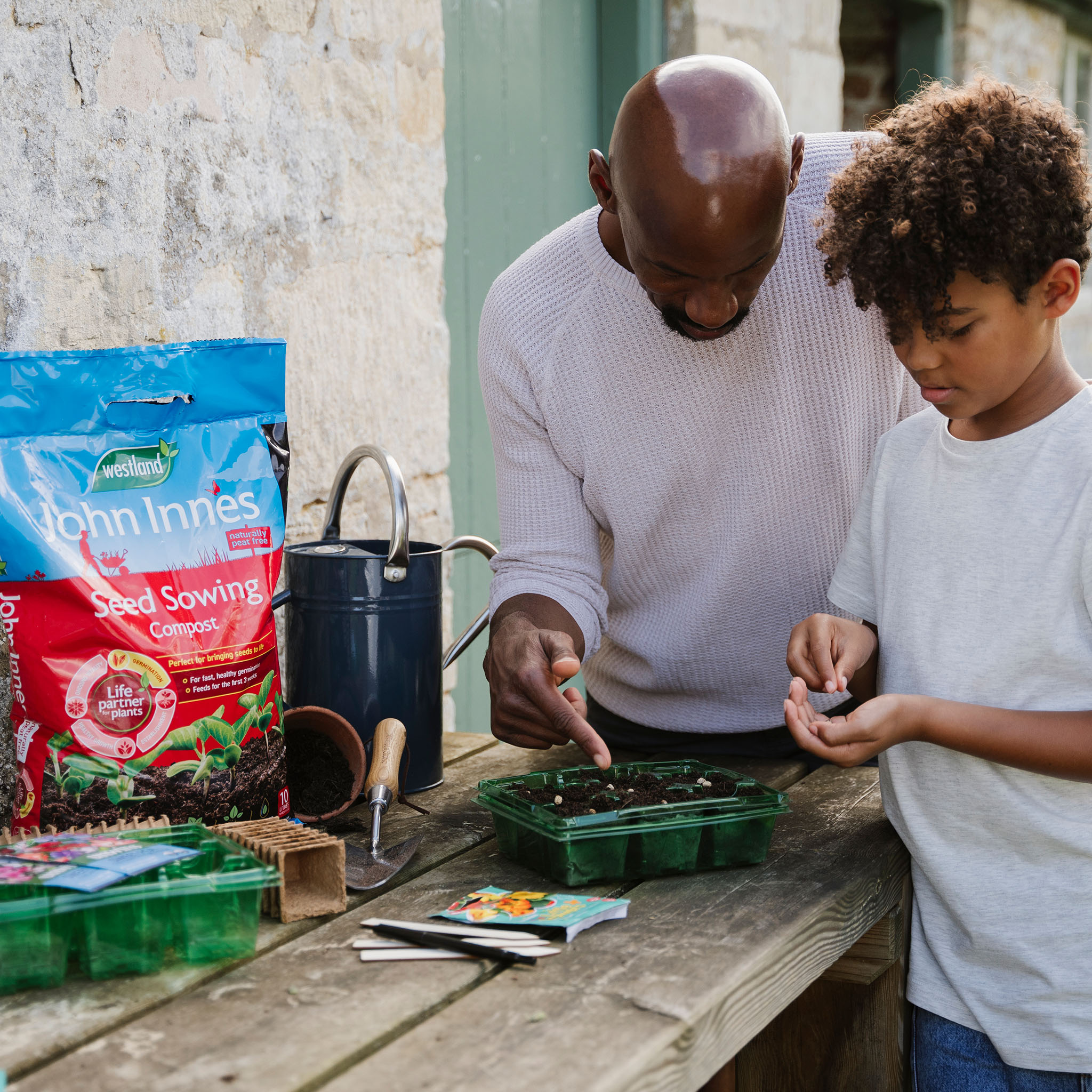
- Prick out seedlings into multi-purpose such as New Horizon or Multi-Purpose with John Innes
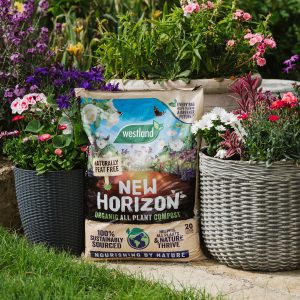
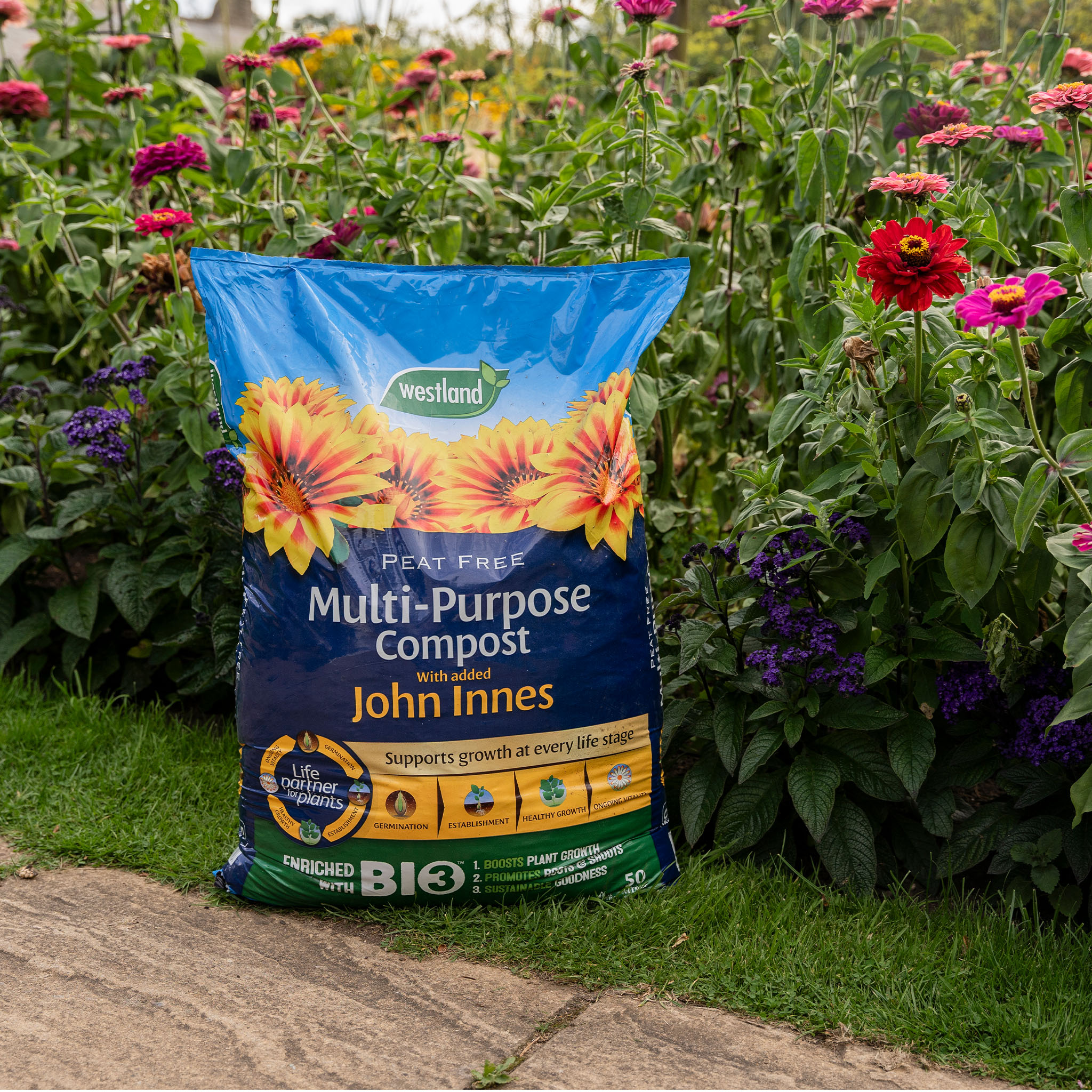
Ericaceous Plants
- Peat has a naturally low pH. Many common peat free compost ingredients have a pH above neutral, meaning multi-purpose mixes are not suitable for ericaceous plants.
- Ericaceous compost has a specially adjusted pH making it perfect for use with lime-hating plants such as camellias, rhododendrons and blueberries
- Westland John Innes Ericaceous Compost has the added benefit of loam, providing additional nutrient buffering and drainage
